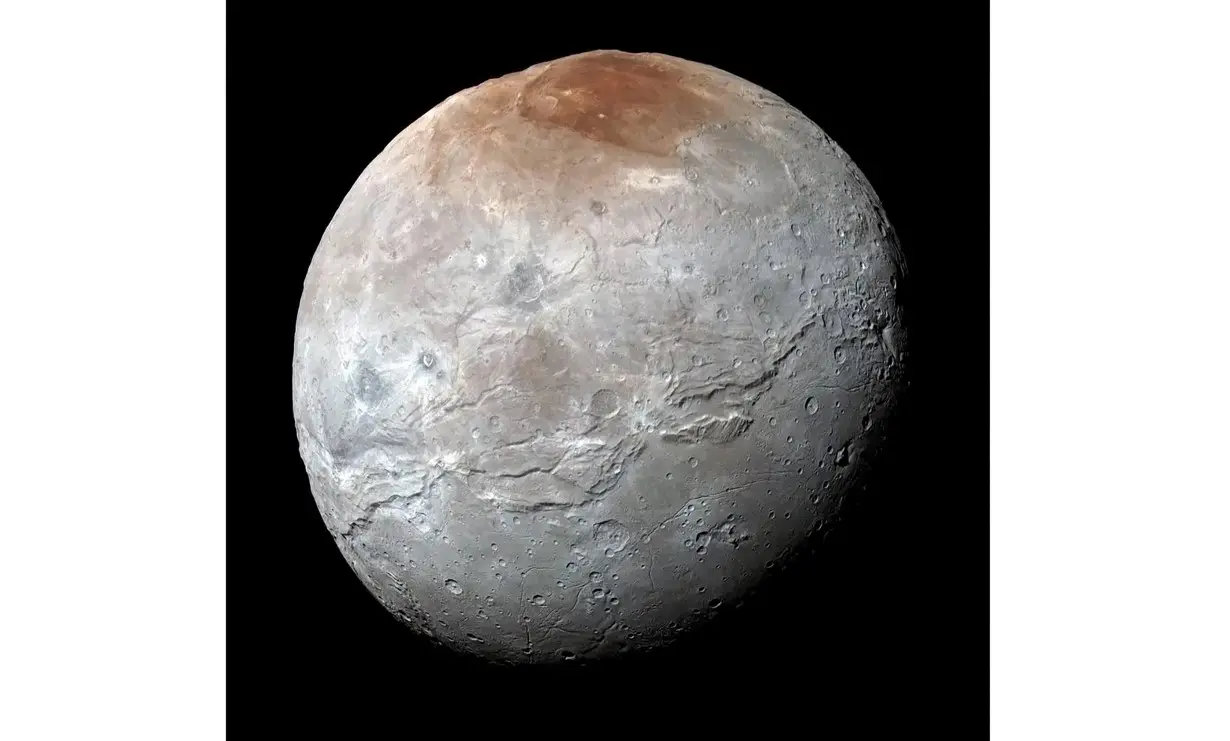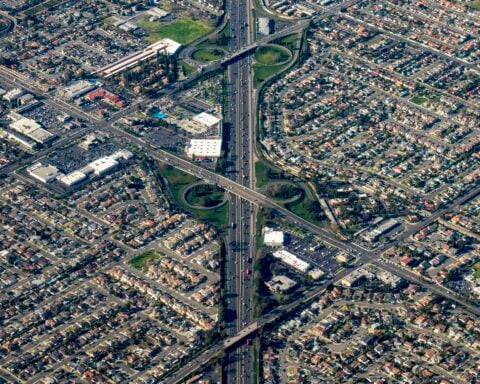NEW YORK (AP) — NASA's Webb Space Telescope has identified new clues about the surface of Pluto's largest moon.
It detected for the first time traces of carbon dioxide and hydrogen peroxide on the surface of Charon, which is about half Pluto's size.
Previous research, including a flyby from NASA's New Horizons spacecraft in 2015, revealed that the moon's surface was coated by water ice. But scientists couldn't sense chemicals lurking at certain infrared wavelengths until the Webb telescope came around to fill in the gaps.
“There's a lot of fingerprints of chemicals that we otherwise wouldn't get to see,” said Carly Howett, a New Horizons scientist who was not involved with the new study.
The research published Tuesday in the journal Nature Communications.
Pluto, a dwarf planet, and its moons are in the far fringes of our solar system in a zone known as the Kuiper Belt. Besides water ice, ammonia and organic materials were previously detected on Charon. Both Pluto and Charon are over 3 billion miles (4.83 billion kilometers) from the sun and are likely too chilly to support life.
Scientists think the hydrogen peroxide may have sprung from radiation pinging off water molecules on Charon's surface. The carbon dioxide might spew to the surface after impacts, said study co-author Silvia Protopapa from the Southwest Research Institute.
The latest detection is key to studying how Charon came to be and may help scientists tease out the makeup of other faraway moons and planets.
___
The Associated Press Health and Science Department receives support from the Howard Hughes Medical Institute’s Science and Educational Media Group. The AP is solely responsible for all content.

 Trump has begun another trade war. Here's a timeline of how we got here
Trump has begun another trade war. Here's a timeline of how we got here
 Canada's leader laments lost friendship with US in town that sheltered stranded Americans after 9/11
Canada's leader laments lost friendship with US in town that sheltered stranded Americans after 9/11
 Chinese EV giant BYD's fourth-quarter profit leaps 73%
Chinese EV giant BYD's fourth-quarter profit leaps 73%
 You're an American in another land? Prepare to talk about the why and how of Trump 2.0
You're an American in another land? Prepare to talk about the why and how of Trump 2.0
 Chalk talk: Star power, top teams and No. 5 seeds headline the women's March Madness Sweet 16
Chalk talk: Star power, top teams and No. 5 seeds headline the women's March Madness Sweet 16
 Purdue returns to Sweet 16 with 76-62 win over McNeese in March Madness
Purdue returns to Sweet 16 with 76-62 win over McNeese in March Madness








